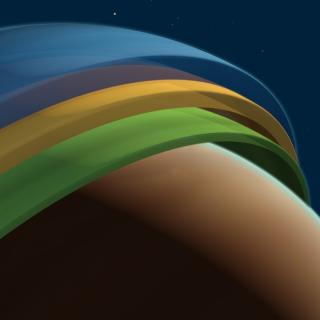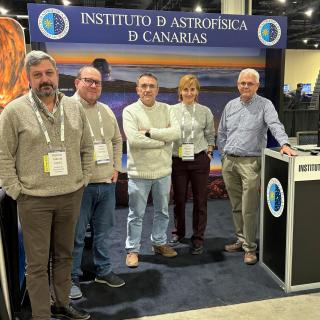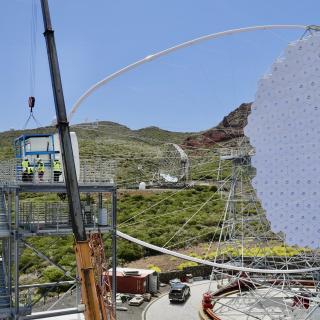It may interest you
-
 An international team, in which the Instituto de Astrofísica de Canarias participates, has succeeded in mapping for the first time the three-dimensional structure of the atmosphere of an exoplanet, that is a planet beyond the Solar System. This research, published today in Nature , has been able to discover very strong winds that carry chemical elements such as iron and titanium, which create certain weather patterns through the planet's atmosphere. This mapping opens the door to more comprehensive and detailed studies of the chemical composition and climate of other planets. Enric PalléAdvertised on
An international team, in which the Instituto de Astrofísica de Canarias participates, has succeeded in mapping for the first time the three-dimensional structure of the atmosphere of an exoplanet, that is a planet beyond the Solar System. This research, published today in Nature , has been able to discover very strong winds that carry chemical elements such as iron and titanium, which create certain weather patterns through the planet's atmosphere. This mapping opens the door to more comprehensive and detailed studies of the chemical composition and climate of other planets. Enric PalléAdvertised on -
 The Instituto de Astrofísica de Canarias (IAC) is demonstrating the quality and international relevance of the Canary Islands Observatories at the 245th session of the American Astronomical Society (AAS) meeting being held this week in Maryland (USA). This meeting, led by the American astrophysics community, brings together the world's most important research centres in this field to share lines of work and proposals for the present and the future. The IAC delegation in Maryland is headed by the director of the centre, Valentín Martínez Pillet, who is part of the panel of speakers with aAdvertised on
The Instituto de Astrofísica de Canarias (IAC) is demonstrating the quality and international relevance of the Canary Islands Observatories at the 245th session of the American Astronomical Society (AAS) meeting being held this week in Maryland (USA). This meeting, led by the American astrophysics community, brings together the world's most important research centres in this field to share lines of work and proposals for the present and the future. The IAC delegation in Maryland is headed by the director of the centre, Valentín Martínez Pillet, who is part of the panel of speakers with aAdvertised on -
 The Roque de los Muchachos Observatory (ORM) of the Instituto de Astrofísica de Canarias (IAC), located on La Palma, has reached another important milestone with the installation of the camera of the LST-4, one of the four Large-Sized Telescopes (LST), which will be part of the Cherenkov Telescope Array Observatory (CTAO), currently under construction. The installation of the camera represents the completion of the telescope assembly and marks its transition to the commissioning phase. After a thorough performance evaluation at the IACTEC building, the IAC's technological and businessAdvertised on
The Roque de los Muchachos Observatory (ORM) of the Instituto de Astrofísica de Canarias (IAC), located on La Palma, has reached another important milestone with the installation of the camera of the LST-4, one of the four Large-Sized Telescopes (LST), which will be part of the Cherenkov Telescope Array Observatory (CTAO), currently under construction. The installation of the camera represents the completion of the telescope assembly and marks its transition to the commissioning phase. After a thorough performance evaluation at the IACTEC building, the IAC's technological and businessAdvertised on
